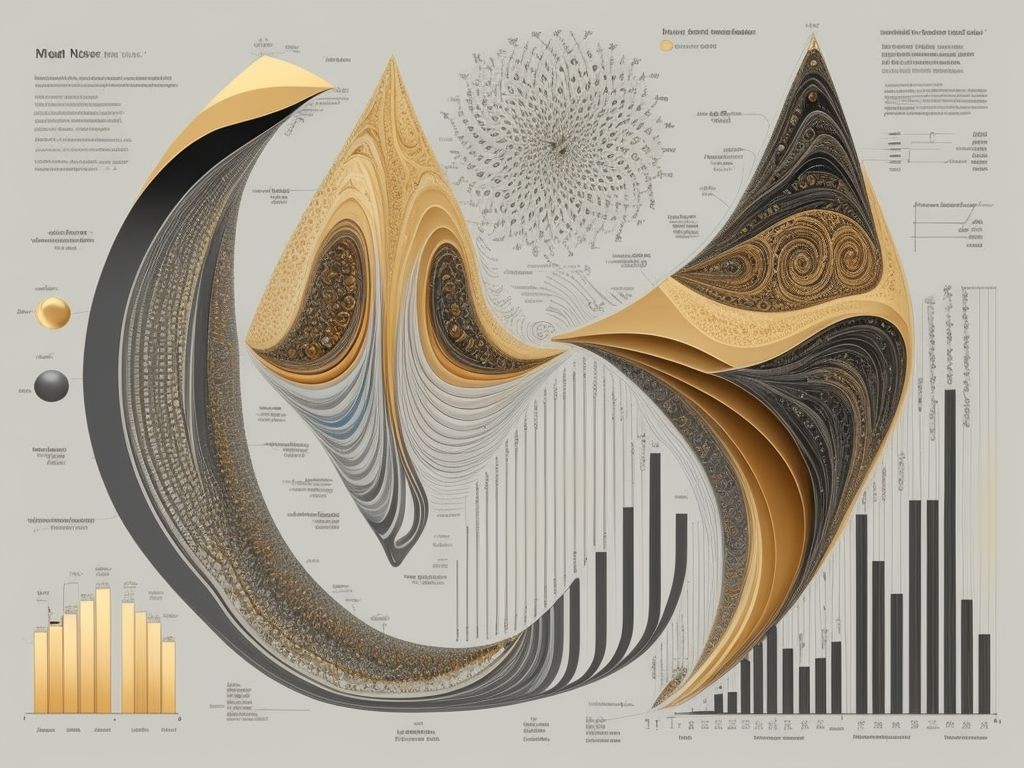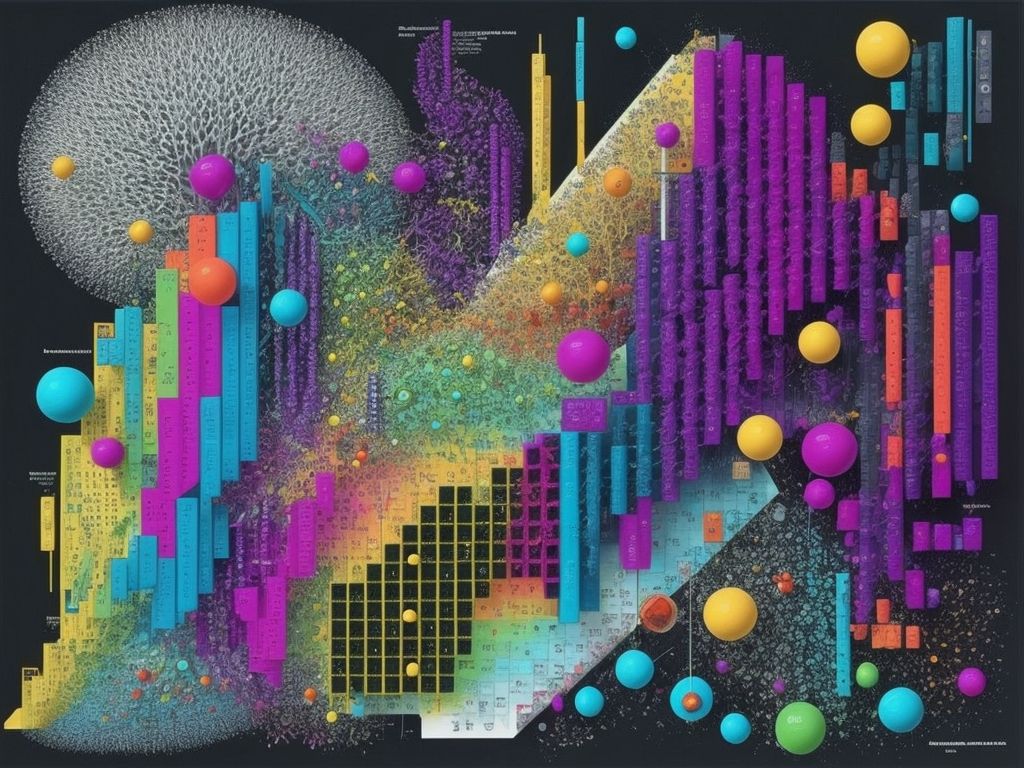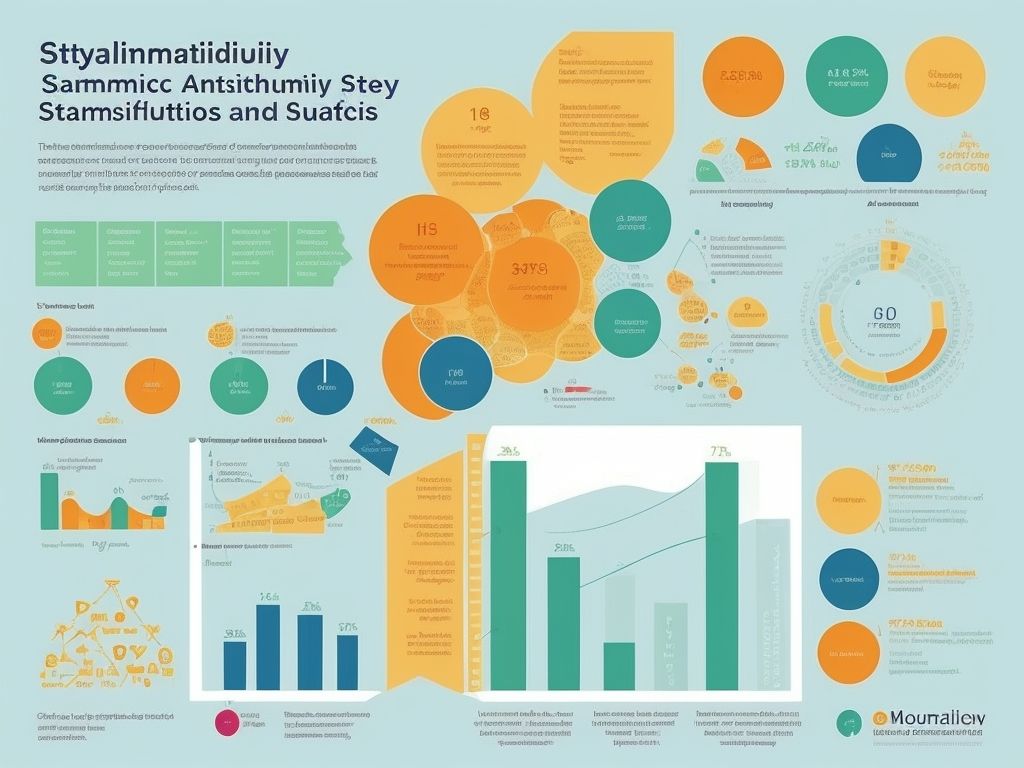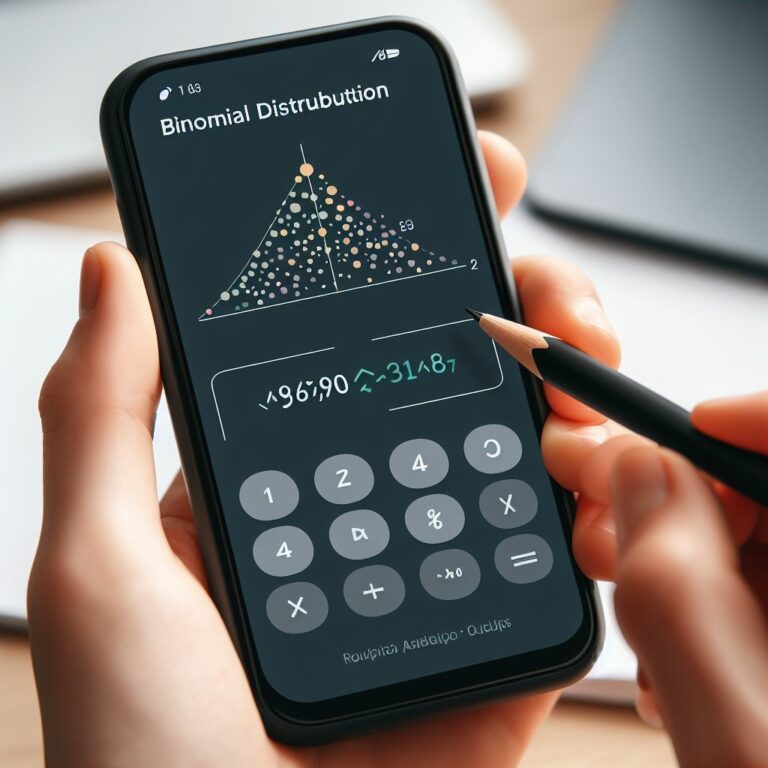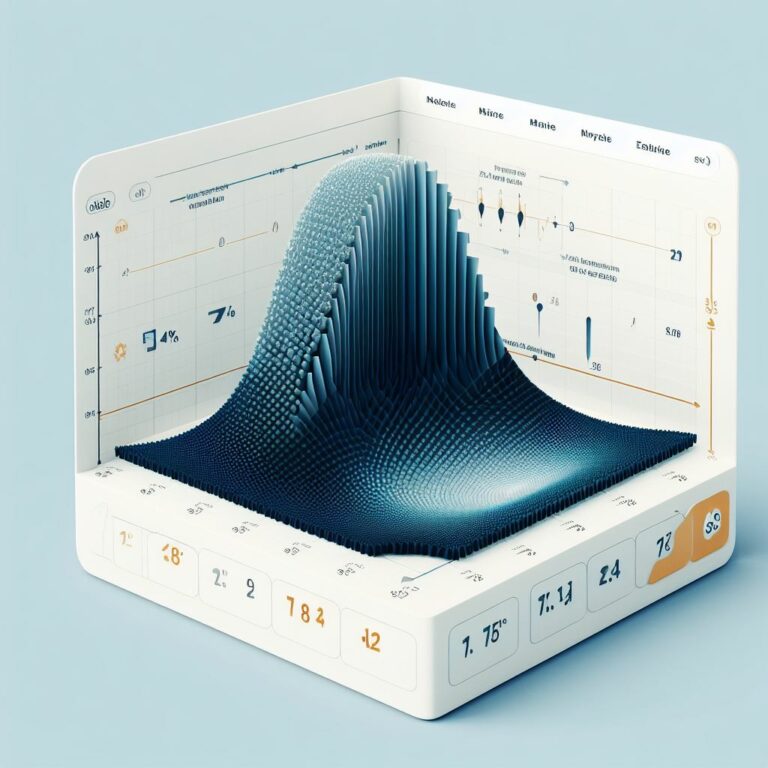Understanding Basic Statistics Definitions
Understanding basic stats definitions is key to comprehending how they play a role in various fields and industries. Stats are more than just figures on a spreadsheet; they are powerful tools that help interpret data and make decisions.
Stats allow us to summarize vast amounts of data and draw conclusions about populations. To make the best use of statistics, it’s important to employ the right methods and techniques. For example, using random sampling to ensure data collection is unbiased. Additionally, employing measures of central tendency like mean and median helps to accurately represent data.
We should also consider variability within data sets by calculating measures such as range or standard deviation. This enables us to assess the reliability and consistency of our results.
It’s essential to remember that statistical significance does not always equal practical importance. Results may be statistically significant, but their real-world impact should also be considered. This helps prevent misinterpretation of data and ensures informed decision-making.
Definition of Basic Statistics
Basic Statistics is all about collecting, analysing, interpreting, presenting, and organising numerical data. It includes tasks such as sampling, calculating central tendency and dispersion, hypothesis testing, and regression analysis.
Let’s look at some definitions linked to Basic Statistics:
| Data | Raw facts or figures from observations, surveys or experiments. |
| Population | The group of individuals or elements the statistical study focuses on. |
| Sample | A part of the population selected for observation or data collection. |
| Variable | A quality or attribute that can be different in value among individuals or things being studied. |
| Descriptive Statistics | Methods used to summarise and describe the features of a dataset. |
| Inferential Statistics | Techniques used to make predictions about a population based on sample data. |
To understand and apply Basic Statistics better, you should be aware of concepts like probability distributions, correlation coefficients, confidence intervals, and significance levels. This helps statisticians draw valid conclusions and make informed decisions based on the available data.
If you want to master Basic Statistics, here are some tips:
- Understand basic mathematical ideas: Knowing algebra and arithmetic helps understand statistical formulas and calculations.
- Develop critical thinking: Learn to evaluate data sets and identify biases or errors accurately.
- Apply data analysis: Analyse real-world data sets with statistical software regularly to gain experience and improve your skills.
- Stay informed of advancements: Keep up with the latest methodologies, techniques, and research findings in statistics to have an extensive understanding of the subject.
By following these tips, you can sharpen your Basic Statistics knowledge and its applications, allowing you to interpret data correctly and make smart decisions depending on statistical evidence.
Importance of Understanding Basic Statistics
Grasping basic stats is key for numerous reasons. It helps us make sense of loads of data and assists us in making smart decisions. Also, it’s very important for research and analyzing results accurately. If we lack understanding of basic stats, we might misconstrue data and come to wrong decisions.
Plus, understanding basic stats allows us to evaluate the credibility of statistical claims made by others. In this info-filled world, where stats are often used to back arguments or persuade people, being able to assess these claims is crucial. By knowing the fundamentals of stats, we can spot mistakes in the reasoning or potential biases in statistical reports.
Further, basic stat knowledge helps us in successful data presentation. Being able to summarize data with graphical representation or numerical summaries lets us communicate info concisely. Whether it’s presenting research results in an academic setting or conveying data-driven insights in a business context, having good knowledge of basic stats boosts our capability to get our message across.
To better understand basic stats, here are some tips worth considering:
- Practically apply the concepts by working with real-world datasets. By using statistical concepts to analyze actual data scenarios, we get valuable insights into how they work and their usefulness when solving problems.
- Get assistance from experts or take courses specifically designed for learning basic stats. Expert advice guarantees that we create a strong base and avoid common issues while learning advanced stat techniques gradually.
Key Terms and Concepts in Basic Statistics
Do you know the key terms and concepts in basic statistics? Population, sample, variable, data, descriptive statistics, and inferential statistics are just a few important ones to keep in mind. Also, remember measures of central tendency (mean, median, mode) and measures of variability (range, standard deviation). These give insight into data spread and distribution. Probability theory is also essential to understand probability and quantify uncertainty.
Practice applying these concepts to real-world examples. This will help you gain confidence and accuracy when conducting statistical analysis and interpreting results. Utilize basic statistics to grow your problem-solving and decision-making skills in various fields such as business, research, healthcare, and more. Don’t miss out! Get proficient in basic statistics today and open up a world of possibilities for evidence-based decision-making and insightful analysis.
Common Statistical Formulas
Let’s get crazy with these statistical formulas! Here are some key concepts:
- Mean is the average value of a set of numbers.
- Median is the middle value when arranged in ascending order.
- Mode is the most frequent value in a set of numbers.
- Variance shows how spread out the numbers are from their mean.
- Standard Deviation is the square root of variance, telling us how much variability there is in the data set.
Mean is great for understanding the central tendency of a dataset. Median works well when there are skewed distributions or outliers. Mode lets us know the most common observation. Variance and Standard Deviation tell us about data dispersion and variability. Variance calculates the squared differences between each number and its mean. Standard Deviation is just Variance in its original unit.
How to Calculate and Interpret Basic Statistics
Do not fear crunching numbers and drawing valuable insights! This guide will help you master the art of basic statistics. Let’s dive in!
- Step 1: Identify Variables
- – Work out the variables you want to analyze and manage them properly. Whether numerical or categorical, knowing their nature is essential for correct interpretation.
- Step 2: Collect Data
- – Get the required data relating to your desired variables. Ensure your sample size is a fair representation of the population you are studying; this will reduce bias.
- Step 3: Do Calculations
- – Now put those mathematical skills to use. Utilize formulas and techniques to compute measures such as mean, median, mode, standard deviation, correlation coefficient, and more.
- Step 4: Analyze Results
- – After you have done your calculations, extract meaningful insights from the numbers. Contrast different measures to understand central tendencies, variations, relationships between variables, and any patterns that arise.
Recognizing basic stats goes beyond mere calculations. It requires focus and a deep comprehension of context. By using these tips in your analysis process, you can increase both accuracy and importance.
- Tip 1: Visualize Data
- – Use charts, graphs, or other visual representations to present your discoveries in an easy-to-understand format. This not only clarifies but also aids in finding trends or exceptions that may not be immediately visible from raw numbers.
- Tip 2: Validate Results
- – Double-check your calculations by cross-referencing them with other statistical methods or consulting with specialists in the field. This validation process guarantees dependability and minimizes misinterpreting errors.
- Tip 3: Think About Limitations
- – Acknowledge the restraints of your analysis due to elements such as sample size restrictions or potential biases. Express these limitations publicly, allowing others to frame your results correctly.
By following these tips and approaching basic stats with enthusiasm and an open attitude, you can unlock valuable insights that have the potential to drive decision-making across different fields. So go ahead, embrace the world of numbers, and let them tell their stories!
Sample Size Calculator
Utilize our comprehensive sample size calculator to determine the necessary sample size for a one-sample statistic analysis. Additionally, it’s adept at calculating differences between two distinct proportions or means, catering to two independent sample sets. Notably, our tool extends its support to more than two groups when dealing with binomial data. Furthermore, you can compute the statistical power based on the provided sample size, alpha value, and the minimum detectable effect (MDE) – which represents the smallest effect that is of significance or interest to the researcher.
Practical Applications of Basic Statistics
Basic statistics can give us meaningful insights and conclusions. Plus, detect patterns and relationships to improve decision-making. To make the most of it, here’s what to do:
- Ensure data quality. Check sources and remove outliers.
- Pick the right method for the data and question.
- Interpret carefully. Don’t jump to conclusions or overgeneralize.
- Keep learning. Attend workshops, read research, or take online courses.
By doing all of this, one can apply basic stats in real-world applications. From business to healthcare, education, and more – stats are key to success!
What’s next?
Gaining understanding of basic stat definitions is key for data analysis. Variability and sampling methods should be kept in mind. Make use of available resources like statistical software packages for efficient analysis.
Push boundaries and learn more advanced concepts. Become a proficient data analyst!
Additional Resources for Further Learning
Tania, a hopeful statistician, knew the fundamentals. But, she was eager to find out more. She came across an online course that explained complex statistical techniques with practical cases. This motivated her to join an online statistics forum where she had interesting conversations with other people passionate about the subject. Through these extra resources, Tania’s interest was nurtured, paving the way for her success.
Six points to consider in order to expand your comprehension beyond the basics include:
- Online courses from platforms like Coursera, Udemy and edX.
- Books like “The Art of Statistics” by David Spiegelhalter and “Statistics for Dummies” by Deborah Rumsey.
- YouTube channels like Khan Academy and StatQuest with visual tutorials.
- Online forums such as Stack Exchange or Reddit’s statistics subreddit.
- Data analysis tools like R or Python with libraries like NumPy and Pandas.
- Podcasts like “Data Skeptic” and “The Data Science Podcast“.
To take it a step further, look into academic journals, attend conferences or workshops, and search for mentorship opportunities.
Frequently Asked Questions
FAQs – Understanding Basic Statistics Definitions
1. What is a variable in statistics?
A variable in statistics refers to any characteristic or attribute that can take on different values. It is a numerical or categorical measurement that provides information about a specific phenomenon or individual.
2. What is the difference between mean, median, and mode?
The mean is the average value of a set of numbers, calculated by summing all values and dividing by the total count. The median is the middle value in a dataset when arranged in ascending or descending order. The mode is the value that appears most frequently in a dataset.
3. What is standard deviation?
Standard deviation is a measure of the dispersion or spread of a dataset. It quantifies how much the individual data points deviate from the mean. A higher standard deviation indicates greater variability within the data.
4. What is a confidence interval?
A confidence interval is a range of values that provides an estimate of the true population parameter with a certain level of confidence. It helps in determining the precision and reliability of statistical estimates based on a sample.
5. What is the difference between correlation and causation?
Correlation is a statistical relationship between two variables, indicating how they vary together. However, correlation does not imply causation, which means that the relationship between two variables does not necessarily indicate a cause-and-effect relationship.
6. What is a p-value in hypothesis testing?
A p-value is a probability value that measures the strength of evidence against a null hypothesis in hypothesis testing. It indicates the likelihood of observing the data or more extreme results if the null hypothesis is true. A lower p-value suggests stronger evidence against the null hypothesis.





